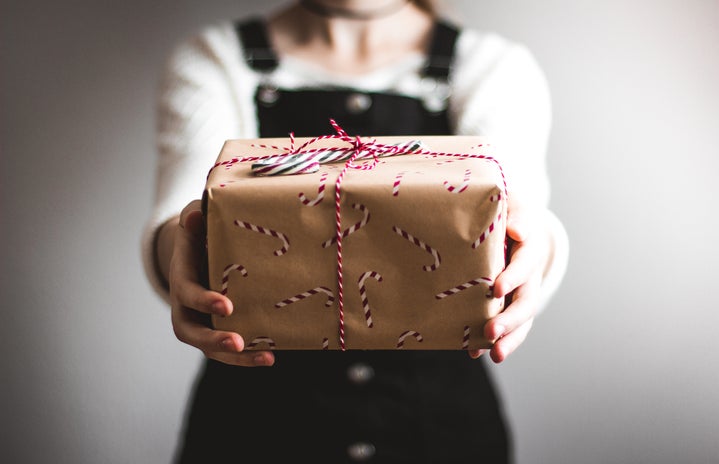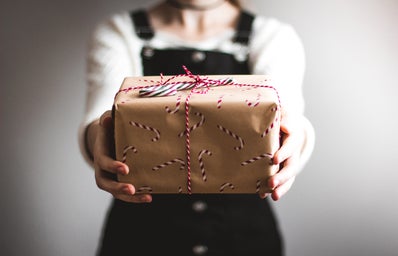Every year, many people celebrate Christmas or other holidays around the winter months. Most people have no idea why we set up fir trees in our homes strung with lights, ornaments, and tinsel. Why certain foods and stockings are only associated with these particular holidays?
First off, why is Christmas celebrated on December 25th? The accepted story is that Jesus was born on this date many years ago, so we celebrate his birthday each year. Many historians have argued over whether or not this is true or not. No one knows exactly when Jesus was born, of course, but many estimate that he was born a bit earlier, between 2 BC and 7 BC. The first recorded Christmas was in 336 AD under the rule of the Roman Emperor Constantine. A few years after this, Pope Julius declared that the 25th of December would officially be when we celebrated Jesus’s birthday. If you would like to read more evidence and research about this, visit this website.
Saint Nicholas is said to be the inspiration for the modern-day Santa Claus. He “gave what he could in homemade food, clothes, and furniture…even oranges, which would have been very rare and expensive in Lycia, where he lived.” To leave these gifts where the children could find them, he hid them in the stockings that girls left over their fireplaces. This became the inspiration for the stockings we hang on our fireplaces today.
http://blog.gifts.com/wp-content/uploads/2011/11/christmas-Stockings.jpg
Many candles burn during this time of year for various reasons. The flame of a candle used to remind people that spring was coming. Jesus was also known as “The Light of the World” which is another reason churches still host candlelight services during the Christmas season. Candles are also widely used in other religious holidays like Hanukkah and Kwanza.
Most people know Hanukkah is celebrated around the same time, but do many people actually know why Hanukkah is celebrated? Hanukkah translates to “dedication” in Hebrew. This Jewish tradition is celebrated to commemorate the successful Jewish rebellion against Antiochus, the ruling monarch in Israel who did not respect Jewish traditions. His soldiers actually force-fed the Jews pork which goes against their beliefs. Finally, a group of Jews called Maccabees rebelled and reclaimed the temple. Hanukkah is an eight-day celebration of their dedication to their people and beliefs. The five elements of Hanukkah include lighting the Menorah (a candle holder that holds nine candles), singing songs, eating fried treats, and the focus is rather on spending time with family and friends rather than reading scriptures and going to the synagogue.
The day after Christmas begins Kwanzaa, a celebration that lasts through January 1. Kwanzaa translates to “the first fruits” in Swahili. African-Americans and Pan-Africans celebrate family, community, culture, and harvest during this time. Kwanzaa is supposed to preserve and revive African culture and was first celebrated in 1966 during the Black Freedom Movement. The candle holder is called the Kinara which holds seven candles to represent the seven principles: crops, mat, candle holder, an ear of corn, seven candles, unity cup, and gifts. On New Year’s Eve, families hold a large feast called a Karamu that includes many African dishes, readings, and remembrances.
Has anyone actually been kissed under mistletoe, or is that just a myth? Norse mythology had mistletoe signifying love and friendship, while the ancient Druids hung mistletoe over their doors to ward away evil spirits and bring good luck to the household. Mistletoe actually translates into the Anglo-Saxon meaning “poop on a stick,” so who knows where the romantic quality of this decoration comes from?
http://img1.southernliving.timeinc.net/sites/default/files/image/2011/12/Misc/mistletoe-x.jpg
Also, what is up with figgy pudding? It is actually called Christmas or Plum Pudding and was originally made of “beef and mutton with raisins, currants, prunes, wines and spices.” It was more like a soup people ate in preparation for the Christmas festivities rather than a pudding. A Christian tradition some people place on the pudding is to include 13 ingredients in the pudding to represent Jesus and His Disciples, and each family member should stir the pudding from east to west to represent the three wise men.
http://whydyoueatthat.files.wordpress.com/2011/12/christmas-pudding-on-red-tablecloth.jpg
While there are many more holiday traditions, these are a few main ones that many people celebrate. Who knew that mistletoe was actually one of the least romantic items on the earth, since it brings diarrhea and stomach pains? Who knew that figgy pudding is an actual thing? I hope this has opened your eyes to some common household items around Christmas that have a bit more meaning than we usually give them. Happy Holidays!

